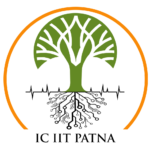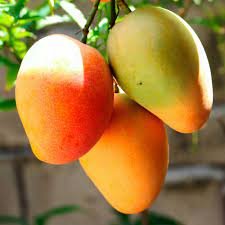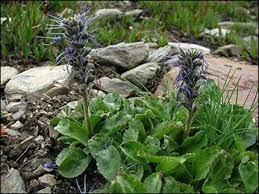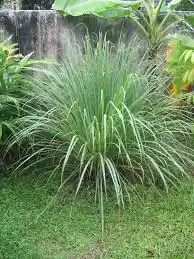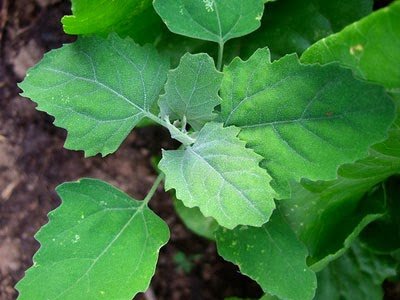apple Nutrition Requirements
Nutrition required by apple at each stage of its life cycle.
SOIL PREPARATION
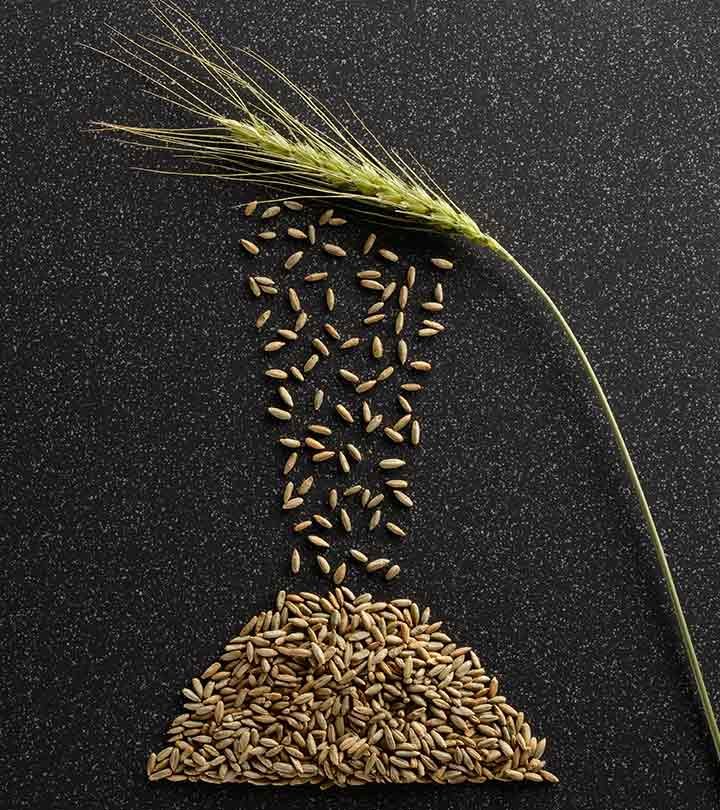
Soil Preparation
Soil preparation is a crucial step in apple cultivation as it sets the foundation for healthy root development and optimal growth throughout the plant's life cycle.
Here's a guide to soil preparation methods and nutrition requirements at the soil preparation stage for apple:
Soil Preparation Methods:
1. **Site Selection**: Choose a well-drained site with loamy or sandy loam soil that receives full sun exposure. Avoid low-lying areas prone to waterlogging and areas with compacted soil.
2. **Soil Testing**: Conduct a soil test to determine the pH and nutrient levels of the soil. Adjust soil pH to the optimal range for apple cultivation, typically between 6.0 and 7.0, using lime to raise pH or sulfur to lower pH as needed.
3. **Soil Tillage**: Till the soil to a depth of 12 to 18 inches (30 to 45 cm) using a tractor-mounted plow or tiller. Break up any compacted layers and remove weeds, rocks, and debris from the planting area.
4. **Organic Matter**: Incorporate organic matter such as compost, well-rotted manure, or aged leaf mulch into the soil to improve soil structure, fertility, and moisture retention. Spread a layer of organic matter over the planting area and incorporate it into the soil during tillage.
5. **Fertilizer Application**: Based on the soil test results and nutrient requirements of apple trees, apply balanced fertilizers such as 10-10-10 or 16-16-16 at the recommended rate. Broadcast the fertilizer evenly over the planting area and incorporate it into the soil during tillage.
6. **Microbial Inoculants**: Optionally, apply microbial inoculants containing beneficial soil microbes such as mycorrhizal fungi to promote root growth and nutrient uptake in apple trees. Follow the manufacturer's recommendations for application rates and methods.
Nutrition Requirements:
1. **Nitrogen (N)**: Nitrogen is essential for vegetative growth and overall tree vigor. Apply nitrogen fertilizer based on soil test recommendations and apple tree requirements. Avoid excessive nitrogen application, especially during the early growth stages, to prevent excessive vegetative growth at the expense of fruit production.
2. **Phosphorus (P)**: Phosphorus is crucial for root development, flower formation, and fruit set in apple trees. Apply phosphorus fertilizer based on soil test recommendations to ensure adequate phosphorus availability for young apple trees during establishment.
3. **Potassium (K)**: Potassium contributes to fruit quality, disease resistance, and overall tree health. Apply potassium fertilizer based on soil test recommendations to meet the potassium requirements of apple trees during the soil preparation stage.
4. **Micronutrients**: Apple trees require micronutrients such as iron (Fe), zinc (Zn), manganese (Mn), copper (Cu), boron (B), and molybdenum (Mo) for various physiological processes. If soil test results indicate micronutrient deficiencies, apply micronutrient fertilizers or foliar sprays as needed.
5. **Calcium (Ca)**: Calcium is essential for cell wall structure and fruit quality in apple trees. Ensure adequate calcium availability in the soil by applying gypsum or calcium carbonate if soil test results indicate calcium deficiency.
6. **Magnesium (Mg)**: Magnesium is a component of chlorophyll and plays a role in photosynthesis and enzyme activation in apple trees. Apply magnesium fertilizer such as magnesium sulfate (Epsom salt) if soil test results indicate magnesium deficiency.
By following these soil preparation methods and meeting the nutrition requirements at the soil preparation stage for apple cultivation, you can establish a healthy growing environment for young apple trees and promote vigorous growth and fruit production in the future. Regular soil testing and monitoring of tree growth and nutrient status can help optimize fertilization practices and ensure long-term success in apple cultivation.
Early Growth (Germination to Establishment)

Early Growth
During the early growth stage of apple trees, from germination to establishment of young seedlings or transplants, it's crucial to provide the necessary nutrients to support healthy root development, vigorous growth, and establishment of a strong foundation for future growth and fruit production.
Here are the key nutrition requirements at the early growth stage for apple:
1. **Nitrogen (N)**: Nitrogen is essential for promoting vegetative growth, including leaf and shoot development, during the early growth stage. Apply nitrogen fertilizer at a rate recommended for young fruit trees, typically around 0.2 to 0.5 pounds of actual nitrogen per tree, depending on soil fertility and tree size. Split the nitrogen application into multiple doses throughout the growing season to support continuous growth.
2. **Phosphorus (P)**: Phosphorus is crucial for promoting root development, which is particularly important during the early growth stage when establishing a strong root system. Apply phosphorus fertilizer based on soil test recommendations or apply a starter fertilizer with a higher phosphorus content at planting or transplanting to support root growth and establishment.
3. **Potassium (K)**: Potassium plays a role in overall tree vigor, disease resistance, and stress tolerance. Apply potassium fertilizer based on soil test recommendations or apply a balanced fertilizer containing potassium to ensure adequate levels for young apple trees during the early growth stage.
4. **Calcium (Ca)**: Calcium is important for cell wall structure and overall tree health. Ensure adequate calcium availability in the soil by applying gypsum or calcium carbonate if soil test results indicate calcium deficiency. Calcium can also be supplied through foliar sprays if necessary.
5. **Magnesium (Mg)**: Magnesium is essential for chlorophyll synthesis and photosynthesis in apple trees. Apply magnesium fertilizer such as magnesium sulfate (Epsom salt) if soil test results indicate magnesium deficiency or if symptoms of deficiency, such as yellowing between leaf veins, are observed in young apple trees.
6. **Micronutrients**: Provide micronutrients such as iron (Fe), zinc (Zn), manganese (Mn), copper (Cu), boron (B), and molybdenum (Mo) in balanced quantities to prevent deficiencies and support optimal growth and development of young apple trees. Micronutrient deficiencies can manifest as leaf discoloration, stunted growth, and reduced vigor.
7. **pH Adjustment**: Ensure the soil pH is within the optimal range for apple cultivation, typically between 6.0 and 7.0. Adjust soil pH using lime to raise pH or sulfur to lower pH based on soil test recommendations to optimize nutrient availability for young apple trees during the early growth stage.
By meeting these nutrition requirements at the early growth stage, you can promote healthy root development, vigorous growth, and establishment of young apple trees, setting the stage for future growth, flowering, and fruit production. Regular monitoring of tree growth and nutrient status, along with appropriate adjustments in fertilization practices, can help optimize early growth and ensure long-term success in apple cultivation.
Tillering Stage (Shoot Development)

Tillering Stage
The tillering stage in apple trees, also known as shoot development, is a critical period where the tree establishes its framework of branches and prepares for future growth and fruit production. Proper nutrition during this stage is essential for healthy shoot development, leaf formation, and overall tree vigor.
Here are the key nutrition requirements at the tillering stage for apple:
1. **Nitrogen (N)**: Nitrogen is crucial for promoting vigorous shoot growth and leaf development during the tillering stage. Apply nitrogen fertilizer at a rate recommended for young fruit trees, typically around 0.2 to 0.5 pounds of actual nitrogen per tree, depending on soil fertility and tree size. Split the nitrogen application into multiple doses throughout the growing season to support continuous growth.
2. **Phosphorus (P)**: Phosphorus is essential for promoting root development and overall tree vigor, which is important during the tillering stage when establishing a strong framework of branches. Apply phosphorus fertilizer based on soil test recommendations or apply a balanced fertilizer with a higher phosphorus content to support shoot development and establishment of branches.
3. **Potassium (K)**: Potassium plays a role in promoting shoot growth, improving disease resistance, and enhancing stress tolerance in apple trees. Apply potassium fertilizer based on soil test recommendations or apply a balanced fertilizer containing potassium to ensure adequate levels for young apple trees during the tillering stage.
4. **Calcium (Ca)**: Calcium is important for cell wall structure and overall tree health. Ensure adequate calcium availability in the soil by applying gypsum or calcium carbonate if soil test results indicate calcium deficiency. Calcium can also be supplied through foliar sprays if necessary.
5. **Magnesium (Mg)**: Magnesium is essential for chlorophyll synthesis and photosynthesis in apple trees, contributing to overall tree vigor and shoot development. Apply magnesium fertilizer such as magnesium sulfate (Epsom salt) if soil test results indicate magnesium deficiency or if symptoms of deficiency, such as yellowing between leaf veins, are observed in young apple trees.
6. **Micronutrients**: Provide micronutrients such as iron (Fe), zinc (Zn), manganese (Mn), copper (Cu), boron (B), and molybdenum (Mo) in balanced quantities to prevent deficiencies and support optimal shoot development and leaf formation in young apple trees. Micronutrient deficiencies can manifest as leaf discoloration, stunted growth, and reduced vigor.
7. **pH Adjustment**: Ensure the soil pH is within the optimal range for apple cultivation, typically between 6.0 and 7.0. Adjust soil pH using lime to raise pH or sulfur to lower pH based on soil test recommendations to optimize nutrient availability for young apple trees during the tillering stage.
By meeting these nutrition requirements at the tillering stage, you can promote healthy shoot development, leaf formation, and overall tree vigor in young apple trees, setting the stage for future growth, flowering, and fruit production. Regular monitoring of tree growth and nutrient status, along with appropriate adjustments in fertilization practices, can help optimize shoot development and ensure long-term success in apple cultivation.
Flowering

Flowering
The flowering stage in apple trees is a critical period that significantly influences fruit development and subsequent yield. Proper nutrition during this stage is essential for supporting flower formation, pollination, and early fruit development.
Here are the key nutrition requirements at the flowering stage for apple trees:
1. **Nitrogen (N)**: Nitrogen is essential for supporting vegetative growth, including flower and shoot development. However, excessive nitrogen during the flowering stage can lead to excessive vegetative growth at the expense of fruit development. Maintain a balanced nitrogen supply, and consider applying nitrogen earlier in the season to support shoot development leading up to flowering.
2. **Phosphorus (P)**: Phosphorus is crucial for flower formation, pollination, and early fruit development. Ensure an adequate supply of phosphorus through soil amendments or fertilizers with a balanced nutrient composition. Phosphorus is especially important during the flowering stage to support the energy requirements of reproductive processes.
3. **Potassium (K)**: Potassium is essential for overall plant health, stress tolerance, and fruit development. During the flowering stage, potassium plays a role in flower and fruit formation. Apply potassium fertilizer based on soil test recommendations or use a balanced fertilizer to meet the needs of apple trees during this critical stage.
4. **Calcium (Ca)**: Calcium is important for cell wall structure and plays a role in preventing disorders such as bitter pit in apples. Ensure adequate calcium availability by applying gypsum or calcium-containing fertilizers if soil test results indicate calcium deficiency.
5. **Magnesium (Mg)**: Magnesium is a component of chlorophyll and is essential for photosynthesis. Ensure an adequate supply of magnesium to support flower and fruit development. Apply magnesium-containing fertilizers such as magnesium sulfate (Epsom salt) if soil test results indicate magnesium deficiency.
6. **Sulfur (S)**: Sulfur is important for the synthesis of certain amino acids and proteins. It also plays a role in overall plant health. Ensure sufficient sulfur levels through soil amendments or sulfur-containing fertilizers.
7. **Micronutrients**: Provide micronutrients such as iron (Fe), zinc (Zn), manganese (Mn), copper (Cu), boron (B), and molybdenum (Mo) in balanced quantities to prevent deficiencies and support optimal flower and fruit development. Micronutrient deficiencies can impact the overall health and productivity of the tree.
8. **pH Adjustment**: Maintain the soil pH within the optimal range for apple cultivation, typically between 6.0 and 7.0. Adjust soil pH using lime to raise pH or sulfur to lower pH based on soil test recommendations to optimize nutrient availability during the flowering stage.
It's important to note that nutrient requirements can vary based on soil conditions, apple cultivar, and local climate. Regular soil testing and monitoring of tree health can help guide fertilizer applications and adjustments to meet the specific needs of apple trees during the flowering stage. Additionally, consulting with local agricultural experts or extension services can provide valuable insights into nutrient management practices tailored to your specific orchard conditions.
Matchuration & Ripening

Matchuration & Ripening
During the maturation and ripening stage of apple trees, proper nutrition is crucial to support fruit development, flavor, color, and storage quality.
Here are the key nutrition requirements at the maturation and ripening stage for apple trees:
1. **Potassium (K)**: Potassium is essential for fruit development, quality, and storability in apple trees. It plays a significant role in regulating water uptake and transpiration, enhancing fruit color, and reducing the risk of disorders such as bitter pit. Apply potassium fertilizer based on soil test recommendations or use a balanced fertilizer containing potassium to meet the needs of apple trees during this critical stage.
2. **Calcium (Ca)**: Calcium is important for maintaining cell wall integrity and firmness in apple fruits. Adequate calcium levels are essential for preventing storage disorders such as bitter pit and cork spot. Ensure sufficient calcium availability by applying gypsum or calcium-containing fertilizers if soil test results indicate calcium deficiency.
3. **Nitrogen (N)**: While nitrogen is essential for overall tree health and growth, excessive nitrogen during the maturation and ripening stage can negatively impact fruit quality and storability by promoting excessive vegetative growth and delaying fruit maturity. Maintain a balanced nitrogen supply to avoid excessive vegetative growth during this stage.
4. **Phosphorus (P)**: Phosphorus is important for energy transfer and fruit development in apple trees. While phosphorus requirements may be lower during the maturation and ripening stage compared to earlier growth stages, ensure an adequate supply to support fruit development and quality.
5. **Magnesium (Mg)**: Magnesium is a component of chlorophyll and is essential for photosynthesis and overall fruit quality. Ensure an adequate supply of magnesium to support fruit development and maintain tree health. Apply magnesium-containing fertilizers such as magnesium sulfate (Epsom salt) if soil test results indicate magnesium deficiency.
6. **Sulfur (S)**: Sulfur is important for the synthesis of certain amino acids and proteins, contributing to fruit flavor and aroma compounds. Ensure sufficient sulfur levels through soil amendments or sulfur-containing fertilizers to support fruit quality during the maturation and ripening stage.
7. **Micronutrients**: Provide micronutrients such as iron (Fe), zinc (Zn), manganese (Mn), copper (Cu), boron (B), and molybdenum (Mo) in balanced quantities to prevent deficiencies and support optimal fruit development and quality. Micronutrient deficiencies can impact fruit color, flavor, and storability.
8. **pH Adjustment**: Maintain the soil pH within the optimal range for apple cultivation, typically between 6.0 and 7.0. Adjust soil pH using lime to raise pH or sulfur to lower pH based on soil test recommendations to optimize nutrient availability during the maturation and ripening stage.
Proper nutrient management during the maturation and ripening stage is essential for producing high-quality apples with desirable flavor, color, and storage characteristics. Regular monitoring of tree health and fruit development, along with appropriate adjustments in fertilization practices, can help optimize fruit quality and ensure successful apple production.
Harvesting

Harvesting
During the harvesting stage for apple trees, proper nutrition management is essential to ensure optimal fruit quality, flavor, and storability.
Here are the key nutrition requirements and procedures to follow during the harvesting stage for apple trees:
Nutrition Requirements:
1. **Potassium (K)**: Potassium plays a crucial role in enhancing fruit color, flavor, and storability in apple trees. Adequate potassium levels contribute to firmer fruit and reduced susceptibility to storage disorders. Apply potassium fertilizer based on soil test recommendations or use a balanced fertilizer containing potassium to meet the needs of apple trees during this critical stage.
2. **Calcium (Ca)**: Calcium is essential for maintaining cell wall integrity and firmness in apple fruits. Adequate calcium levels are crucial for preventing storage disorders such as bitter pit and cork spot. Ensure sufficient calcium availability by applying gypsum or calcium-containing fertilizers if soil test results indicate calcium deficiency.
3. **Nitrogen (N)**: While nitrogen is essential for overall tree health and growth, excessive nitrogen during the harvesting stage can negatively impact fruit quality and storability by promoting soft fruit and increased susceptibility to storage disorders. Reduce nitrogen application during the harvesting stage to avoid undesirable fruit characteristics.
4. **Phosphorus (P)**: Phosphorus plays a role in energy transfer and fruit development in apple trees. While phosphorus requirements may be lower during the harvesting stage compared to earlier growth stages, ensure an adequate supply to support fruit quality and storability.
5. **Sulfur (S)**: Sulfur is important for the synthesis of certain amino acids and proteins, contributing to fruit flavor and aroma compounds. Ensure sufficient sulfur levels through soil amendments or sulfur-containing fertilizers to support fruit quality during the harvesting stage.
Procedures:
1. **Fertilization**: Avoid applying fertilizers close to the harvesting stage to prevent excessive vegetative growth and undesirable fruit characteristics. If necessary, apply slow-release or controlled-release fertilizers earlier in the season to meet the nutritional needs of apple trees leading up to the harvesting stage.
2. **Water Management**: Adequate soil moisture management is crucial during the harvesting stage to ensure fruit quality and storability. Maintain consistent soil moisture levels by providing sufficient irrigation based on weather conditions and soil moisture monitoring.
3. **Pest and Disease Management**: Monitor apple trees for pests and diseases during the harvesting stage and take appropriate measures to manage them. Control pest infestations and diseases to prevent fruit damage and reduce the risk of post-harvest losses.
4. **Harvest Timing**: Harvest apples at the appropriate maturity stage to ensure optimal flavor, texture, and storability. Harvest timing varies depending on apple variety and intended use (fresh consumption or storage). Follow recommended harvesting guidelines based on apple variety characteristics and maturity indices.
5. **Post-Harvest Handling**: Handle harvested apples with care to minimize bruising and mechanical damage. Store harvested apples in appropriate storage conditions (cool, humid environment) to maintain fruit quality and extend shelf life.
By following these nutrition requirements and procedures during the harvesting stage for apple trees, you can ensure high-quality fruit with desirable flavor, texture, and storability, ultimately maximizing the success of your apple production. Regular monitoring of tree health, fruit development, and post-harvest handling practices is essential to optimize fruit quality and minimize post-harvest losses.
apple Farming Economics
Get details of Profitability and cost estimate in growing apple per acres of Land.
SOIL PREPARATION
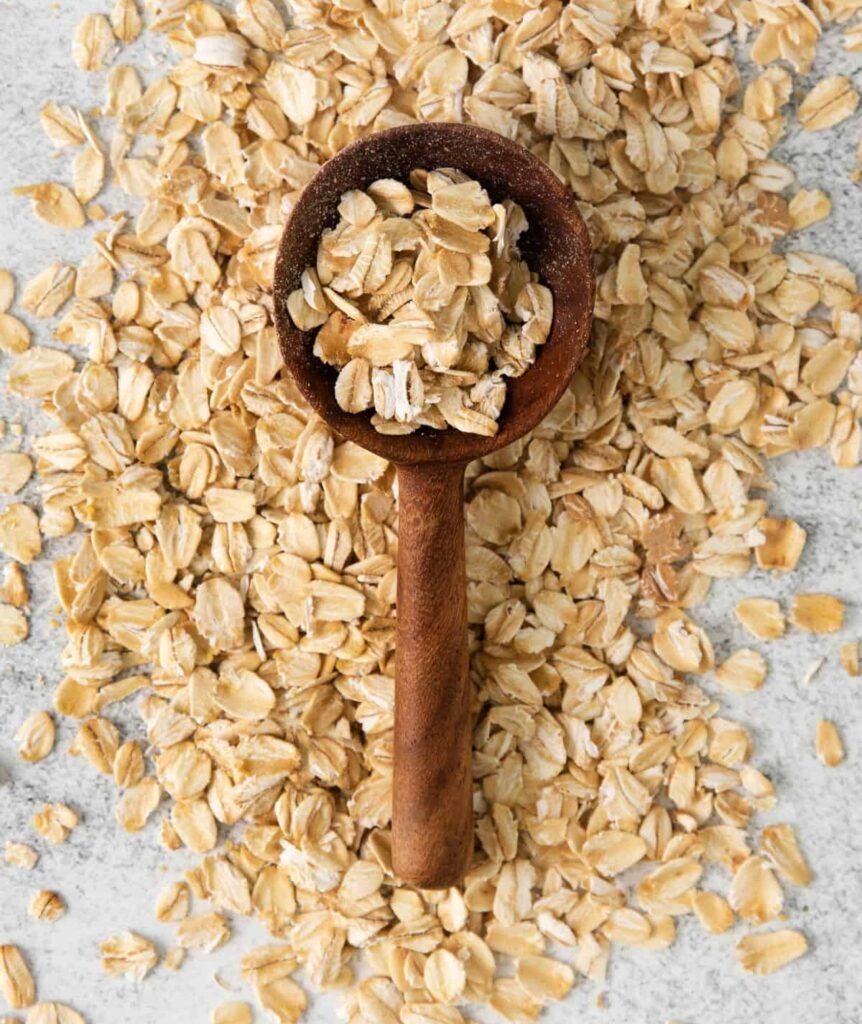
Soil Preparation
Early Growth (Germination to Establishment)

Early Growth
Tillering Stage (Shoot Development)

Tillering Stage
Flowering

Flowering
Matchuration & Ripening

Matchuration & Ripening
Harvesting

Harvesting
apple Disease Details
Nutrition required by apple at each stage of its life cycle.
SOIL PREPARATION

Soil Preparation
During the soil preparation stage for apple orchards, several diseases and pests can affect soil health and subsequent tree growth.
Here are some common diseases and pests that can occur at this stage, along with precautions to prevent them:
1. **Soil-borne Pathogens**: Various soil-borne pathogens, including fungi, bacteria, and nematodes, can infect apple trees during the soil preparation stage, leading to root rot, crown rot, and other diseases.
- **Precautions**:
- Use disease-free planting material from reputable nurseries to minimize the introduction of pathogens.
- Practice crop rotation to break disease cycles and reduce the buildup of soil-borne pathogens.
- Solarize the soil by covering it with clear plastic during hot summer months to reduce soil-borne pathogens.
- Apply soil fumigants or biocontrol agents to control soil-borne pathogens before planting.
2. **Weeds**: Weeds compete with apple trees for water, nutrients, and sunlight, and can harbor pests and diseases.
- **Precautions**:
- Remove weeds manually or with mechanical tillage before planting apple trees.
- Use mulches or cover crops to suppress weed growth and improve soil health.
- Apply pre-emergent herbicides before planting to prevent weed germination.
3. **Nematodes**: Soil-dwelling nematodes can damage apple tree roots, leading to stunted growth and reduced yields.
- **Precautions**:
- Conduct soil tests to assess nematode populations and species present.
- Choose nematode-resistant apple rootstocks when planting.
- Apply nematicides or soil amendments with biocontrol properties to manage nematode populations.
4. **Rodents and Burrowing Pests**: Rodents and burrowing pests such as voles and gophers can damage apple tree roots and bark, leading to tree decline or death.
- **Precautions**:
- Install physical barriers such as tree guards or wire mesh around young trees to protect them from rodent damage.
- Use traps or bait stations to control rodent populations in orchard areas.
5. **Soil Compaction**: Soil compaction can hinder root growth and nutrient uptake, leading to poor tree establishment and reduced yields.
- **Precautions**:
- Avoid heavy machinery or foot traffic on wet soil to prevent compaction.
- Use appropriate tillage equipment and techniques to loosen compacted soil layers.
6. **Erosion**: Soil erosion can occur during heavy rainfall or irrigation, leading to loss of topsoil and nutrient runoff.
- **Precautions**:
- Implement erosion control measures such as contour plowing, terracing, or installing erosion control blankets.
- Plant cover crops or use mulches to protect bare soil from erosion.
7. **Fungal Diseases**: Certain fungal pathogens present in the soil, such as Phytophthora spp., can cause root rot and collar rot in apple trees.
- **Precautions**:
- Improve soil drainage to reduce the risk of waterlogged conditions favorable for fungal pathogens.
- Apply fungicides or biocontrol agents to suppress fungal pathogens before planting.
By implementing these precautions during the soil preparation stage for apple orchards, you can help prevent the occurrence of diseases and pests, promote soil health, and ensure successful tree establishment and orchard productivity. Regular monitoring of soil conditions and pest populations is essential to detect and address potential issues early on. Additionally, consulting with local agricultural experts or extension services can provide valuable guidance specific to your orchard's conditions and pest management strategies.
Early Growth (Germination to Establishment)

Early Growth
During the early growth stage of apple trees, from germination to establishment of young seedlings or transplants, several diseases and pests can affect tree health and growth.
Here are some common diseases and pests that can occur at this stage, along with precautions to prevent them:
Diseases:
1. **Damping-off**: Damping-off is a fungal disease that affects seedlings and young plants, causing rot at the soil line and wilting.
- **Precautions**:
- Start with disease-free planting material from reputable nurseries.
- Use well-draining soil mixtures and avoid overwatering to reduce humidity levels around seedlings.
- Apply fungicide treatments as a preventive measure.
2. **Fire Blight**: Fire blight, caused by the bacterium Erwinia amylovora, can affect young apple trees, causing wilting, blackening of shoots, and cankers.
- **Precautions**:
- Use resistant apple rootstocks if available.
- Prune infected branches promptly and disinfect pruning tools between cuts to prevent disease spread.
- Apply copper-based fungicides during bloom to suppress bacterial populations.
3. **Apple Scab**: Apple scab, caused by the fungus Venturia inaequalis, can affect young leaves and shoots, causing lesions and defoliation.
- **Precautions**:
- Choose apple cultivars with resistance to apple scab if available.
- Apply fungicides preventively before symptoms appear, especially during wet periods.
- Remove and destroy infected leaves to reduce disease pressure.
Pests:
1. **Aphids**: Aphids can infest young apple trees, feeding on sap and causing leaf distortion, stunted growth, and honeydew secretion.
- **Precautions**:
- Monitor for aphid populations and use natural enemies such as ladybugs or lacewings for biological control.
- Apply insecticidal soaps or horticultural oils as a non-toxic control method.
2. **Leafhoppers**: Leafhoppers can damage young apple trees by feeding on sap and transmitting diseases such as apple proliferation.
- **Precautions**:
- Monitor for leafhopper populations and apply insecticides if necessary.
- Remove and destroy infected trees to prevent disease spread.
3. **Codling Moth**: Codling moth larvae can infest young apple fruits, causing damage and reducing fruit quality.
- **Precautions**:
- Use pheromone traps to monitor codling moth populations.
- Apply insecticides at the appropriate timing to target larvae before they enter fruits.
4. **Mites**: Spider mites and other mite species can feed on apple tree foliage, causing stippling and discoloration.
- **Precautions**:
- Monitor for mite populations and use cultural controls such as maintaining proper tree vigor and planting diverse vegetation to promote natural enemies.
5. **Rodents**: Rodents such as voles can damage young apple tree roots and bark, leading to tree decline.
- **Precautions**:
- Use physical barriers such as tree guards or wire mesh to protect young trees from rodent damage.
- Control rodent populations through trapping or baiting if necessary.
By implementing these precautions during the early growth stage of apple trees, you can help prevent the occurrence of diseases and pests, promote healthy tree establishment, and ensure successful orchard establishment. Regular monitoring of tree health and pest populations is essential to detect and address potential issues early on. Additionally, consulting with local agricultural experts or extension services can provide valuable guidance specific to your orchard's conditions and pest management strategies.
Tillering Stage (Shoot Development)

Tillering Stage
During the tillering stage, which corresponds to shoot development in apple trees, several diseases and pests can impact tree health and growth.
Here are some common diseases and pests that can occur at this stage, along with precautions to prevent them:
Diseases:
1. **Powdery Mildew**: Powdery mildew, caused by the fungus Podosphaera leucotricha, can affect apple trees during shoot development, leading to white powdery growth on leaves and shoots.
- **Precautions**:
- Choose apple cultivars with resistance to powdery mildew if available.
- Monitor for early symptoms and apply fungicides preventively, especially during periods of high humidity.
- Prune overcrowded branches to improve air circulation and reduce humidity levels.
2. **Apple Scab**: Apple scab, caused by the fungus Venturia inaequalis, can affect young leaves and shoots during the tillering stage, causing lesions and defoliation.
- **Precautions**:
- Use apple cultivars with resistance to apple scab if available.
- Apply fungicides preventively before symptoms appear, especially during wet periods.
- Remove and destroy infected leaves and shoots to reduce disease pressure.
Pests:
1. **Aphids**: Aphids can infest apple trees during the tillering stage, feeding on sap and causing leaf distortion, stunted growth, and honeydew secretion.
- **Precautions**:
- Monitor for aphid populations and use natural enemies such as ladybugs or lacewings for biological control.
- Apply insecticidal soaps or horticultural oils as a non-toxic control method.
2. **Leafhoppers**: Leafhoppers can damage young apple trees during the tillering stage by feeding on sap and transmitting diseases such as apple proliferation.
- **Precautions**:
- Monitor for leafhopper populations and apply insecticides if necessary.
- Remove and destroy infected trees to prevent disease spread.
3. **Codling Moth**: Codling moth larvae can infest young apple fruits during the tillering stage, causing damage and reducing fruit quality.
- **Precautions**:
- Use pheromone traps to monitor codling moth populations.
- Apply insecticides at the appropriate timing to target larvae before they enter fruits.
4. **Mites**: Spider mites and other mite species can feed on apple tree foliage during the tillering stage, causing stippling and discoloration.
- **Precautions**:
- Monitor for mite populations and use cultural controls such as maintaining proper tree vigor and planting diverse vegetation to promote natural enemies.
5. **Rodents**: Rodents such as voles can damage young apple tree roots and bark during the tillering stage, leading to tree decline.
- **Precautions**:
- Use physical barriers such as tree guards or wire mesh to protect young trees from rodent damage.
- Control rodent populations through trapping or baiting if necessary.
By implementing these precautions during the tillering stage of apple trees, you can help prevent the occurrence of diseases and pests, promote healthy shoot development, and ensure successful orchard establishment. Regular monitoring of tree health and pest populations is essential to detect and address potential issues early on. Additionally, consulting with local agricultural experts or extension services can provide valuable guidance specific to your orchard's conditions and pest management strategies.
Flowering

Flowering
During the flowering stage of apple trees, several diseases and pests can affect tree health and fruit development.
Here are some common diseases and pests that can occur at this stage, along with precautions to prevent them:
Diseases:
1. **Fire Blight**: Fire blight, caused by the bacterium Erwinia amylovora, is a significant concern during the flowering stage. It can cause wilting, blackening of shoots, and cankers on branches and blossoms.
- **Precautions**:
- Choose apple cultivars with resistance to fire blight if available.
- Prune infected branches promptly and disinfect pruning tools between cuts to prevent disease spread.
- Apply copper-based fungicides during bloom to suppress bacterial populations.
- Avoid overhead irrigation, as wet conditions can promote disease spread.
2. **Apple Scab**: Apple scab, caused by the fungus Venturia inaequalis, can affect blossoms and young leaves during the flowering stage, leading to lesions and defoliation.
- **Precautions**:
- Use apple cultivars with resistance to apple scab if available.
- Apply fungicides preventively before symptoms appear, especially during wet periods.
- Remove and destroy infected blossoms and leaves to reduce disease pressure.
Pests:
1. **Aphids**: Aphids can infest apple trees during the flowering stage, feeding on sap and causing distortion of blossoms and leaves.
- **Precautions**:
- Monitor for aphid populations and use natural enemies such as ladybugs or lacewings for biological control.
- Apply insecticidal soaps or horticultural oils as a non-toxic control method.
2. **Leafhoppers**: Leafhoppers can damage apple trees during the flowering stage by feeding on sap and transmitting diseases such as apple proliferation.
- **Precautions**:
- Monitor for leafhopper populations and apply insecticides if necessary.
- Remove and destroy infected trees to prevent disease spread.
3. **Codling Moth**: Codling moth larvae can infest young apple fruits during the flowering stage, causing damage and reducing fruit quality.
- **Precautions**:
- Use pheromone traps to monitor codling moth populations.
- Apply insecticides at the appropriate timing to target larvae before they enter fruits.
4. **Mites**: Spider mites and other mite species can feed on apple tree foliage during the flowering stage, causing stippling and discoloration.
- **Precautions**:
- Monitor for mite populations and use cultural controls such as maintaining proper tree vigor and planting diverse vegetation to promote natural enemies.
5. **Rodents**: Rodents such as voles can damage apple tree roots and bark during the flowering stage, leading to tree decline.
- **Precautions**:
- Use physical barriers such as tree guards or wire mesh to protect young trees from rodent damage.
- Control rodent populations through trapping or baiting if necessary.
By implementing these precautions during the flowering stage of apple trees, you can help prevent the occurrence of diseases and pests, promote healthy blossoms and fruit set, and ensure successful orchard establishment. Regular monitoring of tree health and pest populations is essential to detect and address potential issues early on. Additionally, consulting with local agricultural experts or extension services can provide valuable guidance specific to your orchard's conditions and pest management strategies.
Matchuration & Ripening

Matchuration & Ripening
During the maturation and ripening stage of apple trees, several diseases and pests can affect fruit quality and storage.
Here are some common diseases and pests that can occur at this stage, along with precautions to prevent them:
Diseases:
1. **Bitter Pit**: Bitter pit is a physiological disorder that affects apple fruits during storage, characterized by dark, sunken spots on the fruit surface.
- **Precautions**:
- Maintain adequate calcium levels in the soil to prevent calcium deficiency, which is associated with bitter pit.
- Avoid excessive nitrogen fertilization, as it can increase the susceptibility of fruits to bitter pit.
- Handle fruits carefully during harvesting and post-harvest handling to minimize physical damage that can lead to bitter pit.
2. **Storage Rots**: Various fungal pathogens can cause storage rots in apple fruits, including Botrytis cinerea (gray mold), Penicillium spp., and Alternaria spp.
- **Precautions**:
- Harvest fruits at the appropriate maturity stage and handle them carefully to minimize wounds and bruising that can serve as entry points for fungal pathogens.
- Ensure proper storage conditions, including temperature and humidity control, to minimize fungal growth and spread during storage.
- Use post-harvest fungicides or biocontrol agents to suppress fungal pathogens and reduce the incidence of storage rots.
Pests:
1. **Codling Moth**: Codling moth larvae can infest apple fruits during the maturation and ripening stage, causing damage and reducing fruit quality.
- **Precautions**:
- Use pheromone traps to monitor codling moth populations.
- Apply insecticides at the appropriate timing to target larvae before they enter fruits.
- Implement cultural practices such as sanitation and removal of infested fruits to reduce codling moth populations.
2. **Apple Maggot**: Apple maggot flies can lay eggs in apple fruits during the maturation and ripening stage, leading to the development of maggots inside the fruit.
- **Precautions**:
- Use sticky traps or red sphere traps to monitor apple maggot fly activity.
- Apply insecticides at the appropriate timing to target adult flies before they lay eggs on fruits.
- Implement cultural practices such as sanitation and removal of infested fruits to reduce apple maggot populations.
3. **Rodents**: Rodents such as mice and rats can damage apple fruits during storage by feeding on them and causing physical damage.
- **Precautions**:
- Ensure proper storage facilities that are rodent-proof and inaccessible to rodents.
- Store harvested fruits in containers or bins that are elevated above the ground and sealed to prevent rodent access.
- Implement rodent control measures such as traps or bait stations around storage areas.
By implementing these precautions during the maturation and ripening stage of apple fruits, you can help prevent the occurrence of diseases and pests, promote fruit quality, and ensure successful storage and post-harvest handling. Regular monitoring of fruit condition and storage conditions is essential to detect and address potential issues early on. Additionally, consulting with local agricultural experts or extension services can provide valuable guidance specific to your orchard's conditions and pest management strategies.
Harvesting

Harvesting
During the harvesting stage, apple fruits may be susceptible to certain diseases and pests that can affect fruit quality and storage.
Here are some common diseases and pests that can occur at this stage, along with precautions to prevent them:
Diseases:
1. **Storage Rots**: Various fungal pathogens, including Botrytis cinerea (gray mold), Penicillium spp., and Alternaria spp., can cause storage rots in apple fruits during harvesting and post-harvest handling.
- **Precautions**:
- Harvest fruits at the appropriate maturity stage and handle them carefully to minimize wounds and bruising that can serve as entry points for fungal pathogens.
- Ensure proper storage conditions, including temperature and humidity control, to minimize fungal growth and spread during storage.
- Use post-harvest fungicides or biocontrol agents to suppress fungal pathogens and reduce the incidence of storage rots.
2. **Bitter Pit**: Bitter pit is a physiological disorder characterized by dark, sunken spots on the fruit surface, typically occurring during storage but can also manifest during the harvesting stage.
- **Precautions**:
- Maintain adequate calcium levels in the soil to prevent calcium deficiency, which is associated with bitter pit.
- Avoid excessive nitrogen fertilization, as it can increase the susceptibility of fruits to bitter pit.
- Handle fruits carefully during harvesting and post-harvest handling to minimize physical damage that can lead to bitter pit.
Pests:
1. **Codling Moth**: Codling moth larvae can infest apple fruits during the harvesting stage, causing damage and reducing fruit quality.
- **Precautions**:
- Monitor orchards for codling moth activity and apply insecticides at the appropriate timing to target larvae before they enter fruits.
- Implement cultural practices such as sanitation and removal of infested fruits to reduce codling moth populations.
2. **Apple Maggot**: Apple maggot flies can lay eggs in apple fruits during the harvesting stage, leading to the development of maggots inside the fruit.
- **Precautions**:
- Use sticky traps or red sphere traps to monitor apple maggot fly activity.
- Apply insecticides at the appropriate timing to target adult flies before they lay eggs on fruits.
- Implement cultural practices such as sanitation and removal of infested fruits to reduce apple maggot populations.
3. **Rodents**: Rodents such as mice and rats can damage apple fruits during harvesting and post-harvest handling by feeding on them and causing physical damage.
- **Precautions**:
- Ensure proper storage facilities that are rodent-proof and inaccessible to rodents.
- Store harvested fruits in containers or bins that are elevated above the ground and sealed to prevent rodent access.
- Implement rodent control measures such as traps or bait stations around storage areas.
By implementing these precautions during the harvesting stage of apple fruits, you can help prevent the occurrence of diseases and pests, promote fruit quality, and ensure successful storage and post-harvest handling. Regular monitoring of fruit condition and storage conditions is essential to detect and address potential issues early on. Additionally, consulting with local agricultural experts or extension services can provide valuable guidance specific to your orchard's conditions and pest management strategies.



